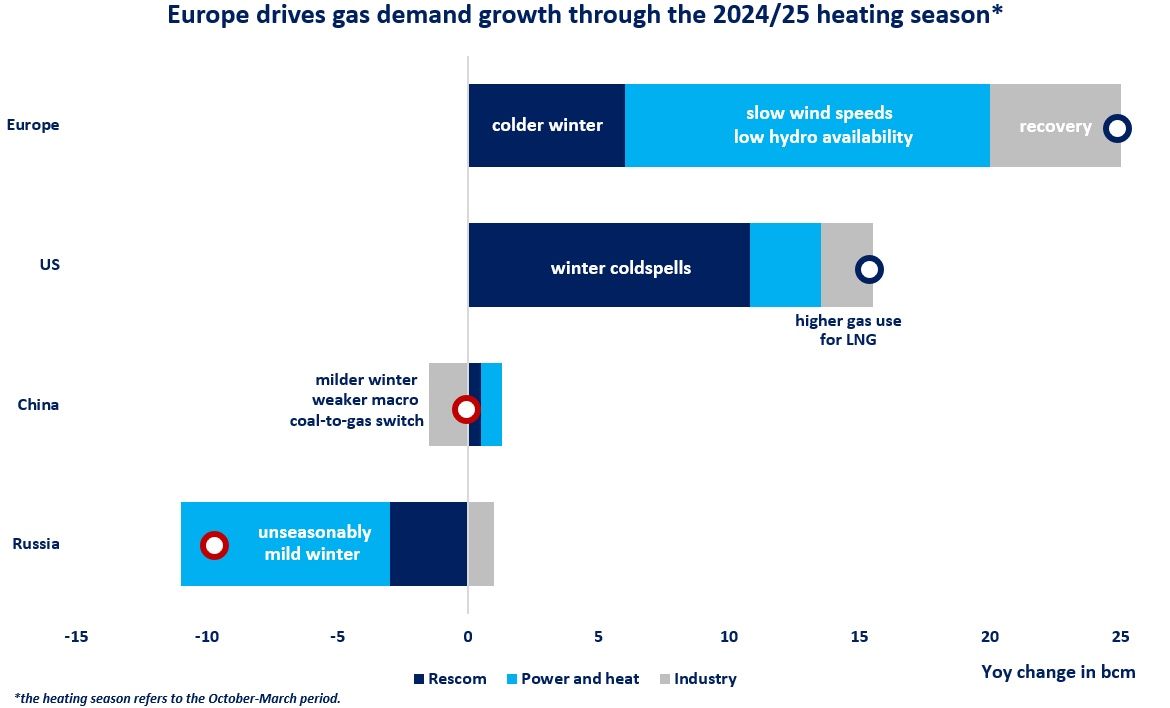

The flex monster is back: EU gas storage provided almost all incremental gas supply during last week’s coldspell, demonstrating once again its crucial role for the European gas and energy system.
Below average temperatures drove up EU gas demand sharply, jumping by 45% week-on-week in the residential and commercial sectors.
Storage sites reacted prompted, with withdrawals soaring by almost 50% during the same period.
In fact, storage sites met around 90% of incremental demand during the coldspell, providing a vital back-up to the gas system and meeting almost half of total demand during peak days.
Domestic production and piped imports remained broadly flat, highlighting the limited upstream flex both in the EU and its major pipeline suppliers. Norway, Algeria and Azerbaijan are all supplying close to their nameplate capacity.
LNG send-out remained flattish as well. while LNG is divertible and played a crucial role in offsetting the shortfall in Russian gas, the short-term flexibility of LNG send-out is limited when compared to underground storage sites.
Despite last week’s strong storage draws, inventory levels remains just 10 bcm above their 5y average, and storage sites are still 83% full.
Last week’s coldspell is a good reminder why we should keep storage sites full as long as possible: their reactivity and flexibility is irreplaceable and will be certainly needed during the next coldspell… which could occur also at the end of the heating season…
This raises also the question who could replace the flexibility services provided by storage sites in decarbonized future?
To be clear, last week’s storage draws equates to the output of 800 GW wind capacity, assuming that they run at 40% capacity… the EU has around 200 GW of wind capacity and the wind is not always blowing during cold days.
What is your view? What is the future of gas storage in Europe? And how to ensure seasonal supply swings in a decarbonized energy system?
Source: Greg Molnar (LinkedIn)













